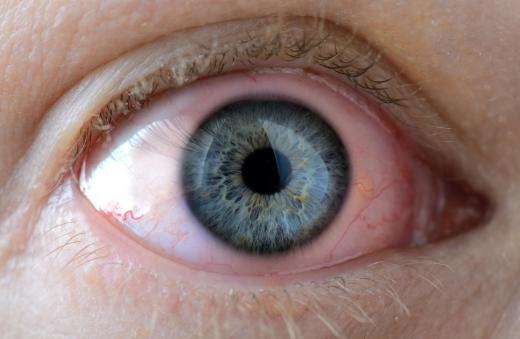What is Zirconium?
 Mary McMahon
Mary McMahon
Zirconium is a metallic element with the atomic number of 40 and the symbol Zr. This highly reactive element is not found in a pure form in nature, and is most commonly isolated from the mineral zircon. Zircon has been used by humans for centuries for various applications, and is commonly found in Australia, Russia, Brazil, and the United States, among several other locations. Other minerals which contain zirconium are extracted as a byproduct of the mining process in many regions of the world.
In its pure form, this metal is slightly silvery in appearance, and is malleable and highly ductile. It is also very resistant to corrosion, which makes it extremely popular in metal alloys. When an alloy needs to be corrosion-resistant, adding zirconium to the mix can increase the durability. This element belongs to the transition metals, a group of neighboring metals on the periodic table of elements which includes palladium, silver, cobalt, copper, zinc, and nickel, among many others.

Although zirconium can only be found in a combined form in nature, it is very abundant on Earth. It is a common element with a number of naturally-occurring isotopes which can be used in a variety of ways. Human uses for zirconium beyond alloys include the ceramics industry, which uses zirconium in various ceramics compounds and glazes. The metal is also used in jewelry, with black zirconium being a popular choice for rings because it is durable and corrosion resistant.

This element was first identified in the late 1700s, although it took longer to isolate it successfully to prove that it was a distinct chemical element. One caution with zirconium is that when the metal is finely divided, it can be prone to spontaneous combustion, especially in warmer temperatures. Care has to be taken when working with the metal in some settings as a result, especially if it is being ground or powdered.
While zirconium is not toxic, it can cause contact irritation to the skin and eyes. If exposed, people should wash their skin or flush their eyes, and it may be a good idea to see a doctor if zirconium has entered someone's eyes. This element can also cause the formation of granulomas in the lungs if it is inhaled. These clusters of immune system cells are formed when the body reacts to foreign particles. This element does not appear to be biologically necessary, although trace amounts are found in many organisms, including people.
AS FEATURED ON:
AS FEATURED ON:












Discussion Comments
@elizabeth23 - I also like to avoid natural diamonds because I think they are dangerous and wasteful to mine. However, there are also manufactured diamonds if you want something that is nicer than cubic zirconium; some people can't tell the difference between zirconium and diamonds, or natural and artificial diamonds, but there are some differences for people who are serious about jewelry.
I love cubic zirconium jewelry. It usually looks just as nice as diamonds, and costs way less. It also does not have the same risks that diamond mining and processing have, since trying to find diamonds in nature is highly dangerous.
Post your comments